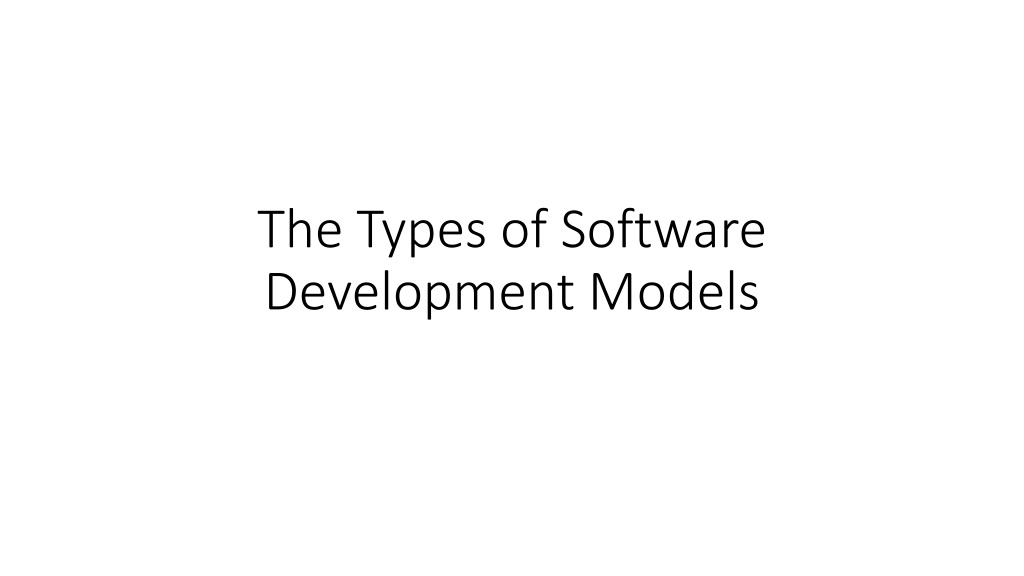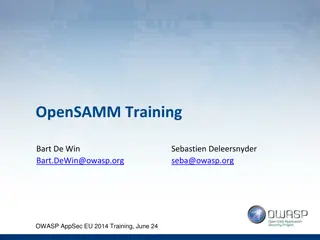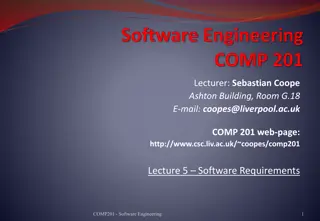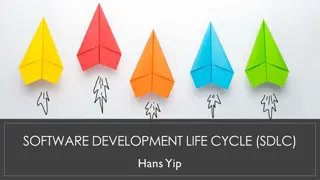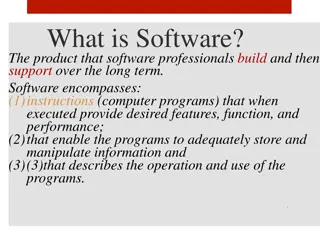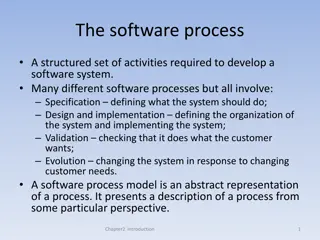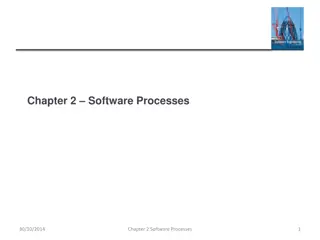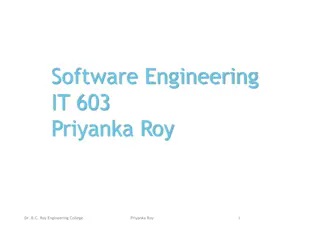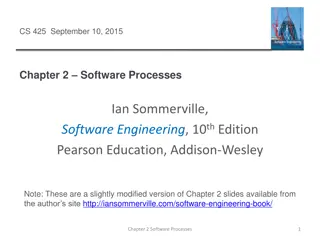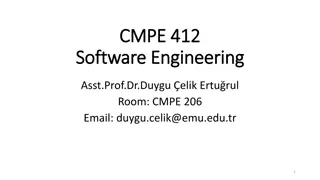Understanding Software Development Models and SDLC Process
Software development models are methodologies chosen based on project goals. Explore types like Waterfall Model, V-Model, and Incremental Process Model with their advantages and disadvantages in this informative overview.
Download Presentation

Please find below an Image/Link to download the presentation.
The content on the website is provided AS IS for your information and personal use only. It may not be sold, licensed, or shared on other websites without obtaining consent from the author. Download presentation by click this link. If you encounter any issues during the download, it is possible that the publisher has removed the file from their server.
E N D
Presentation Transcript
The Types of Software Development Models
What is a Software Development Model? The software development models are the various processes or methodologies that are being selected for the development of the project depending on the project s aims and goals.
The Eight Types of SDLC Models SDLC Models
Waterfall Model One of the earliest models used for software development. The Waterfall Model is a linear sequential flow One step must complete for next to begin Used with projects that have a defined set of requirements.
Waterfall Model Advantages: 1. Simple and understandable 2. Works fine for smaller projects. Disadvantages: 1. Rigid structure 2. Does not work well for complex projects chance of a change in requirements
V-Model Extension of the waterfall model Testing phase for each corresponding development stage Known as Verification and Validation model.
V-Model Advantages: 1. Simple and understandable 2. Higher chance of success due to the test plans of the development stage. Disadvantages: 1. Very rigid structure 2. Does not work well for complex projects chance of a change in requirements
Incremental process model Incremental process model Iterative and incremental development stages. Comprised of several mini Waterfall cycles. Advantage of learnings and insights from earlier development stages.
Incremental process model Incremental process model ( (Advantages and Disadvantages) Advantages: 1. Accommodates change requests between increments. 2. Able to detect problems earlier. Disadvantages: 1. Require more resources. 2. Needs strategic planning and documentation.
Agile Model Agile Model Rooted in process adaptability and user engagement Rapid delivery of functioning software components. Sprints ( 1-4 Weeks)
Agile Model Agile Model Advantages: 1. Decreases the amount of time to yield individual system features. 2. Communication and continuous feedback from the customer/user that can provide clear direction for the project. Disadvantages: 1. The Agile method can potentially veer-off track as it relies on end- user interaction that may or may not be clearly expressed. 2. Documentation is also minimal for an Agile software development strategy and requires a well-versed, cross-functional team.
Sources https://tryqa.com/what-are-the-software-development-models/ 1. 2. https://ca.insight.com/en_CA/content-and-resources/2016/07152016-types-of-software-development- models.html 3. guru99.com/verification-v-s-validation-in-a-software-testing.html 4. https://www.tutorialspoint.com/sdlc/sdlc_v_model.htm 5. https://www.geeksforgeeks.org/software-engineering-incremental-process-model/
